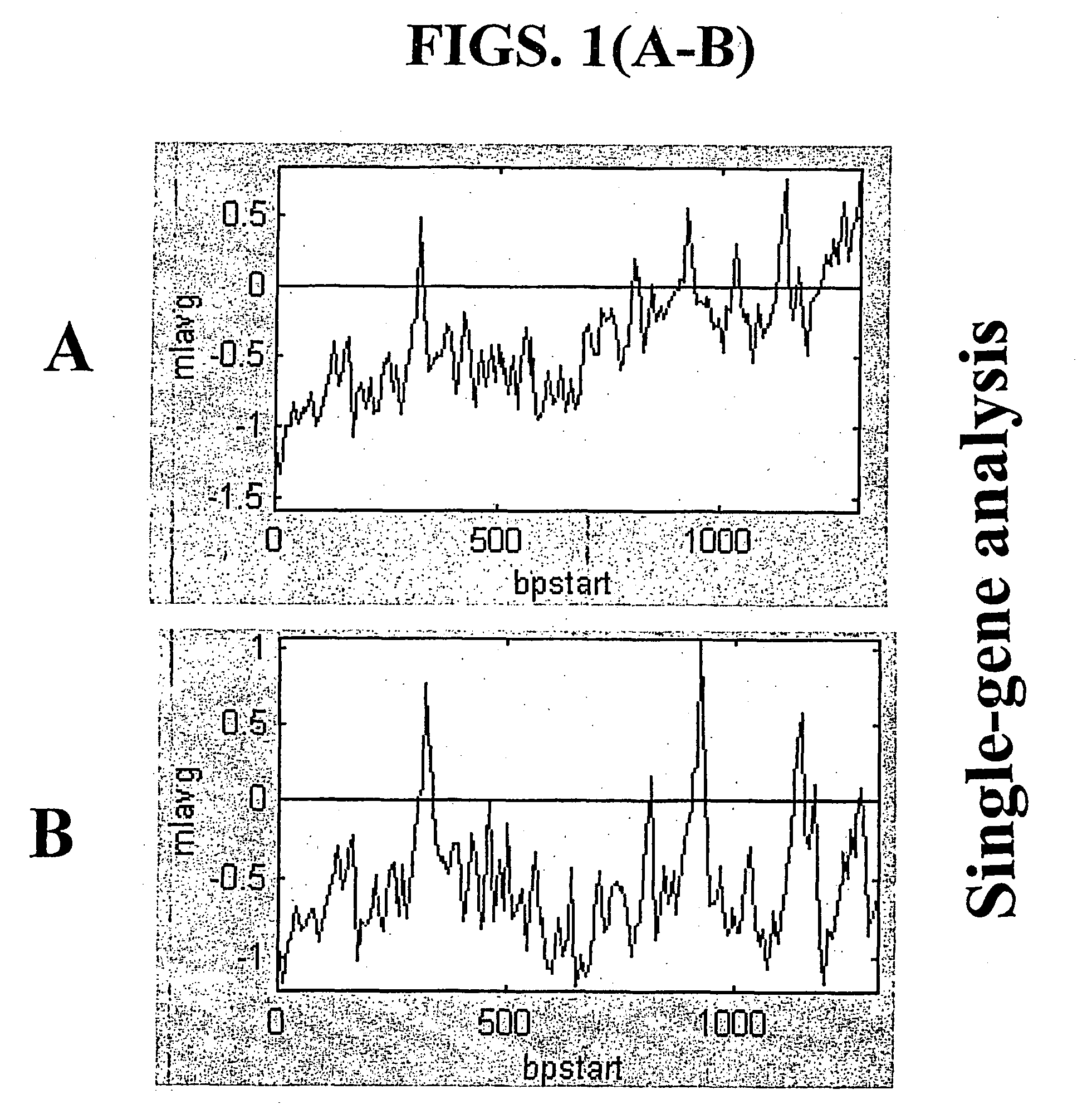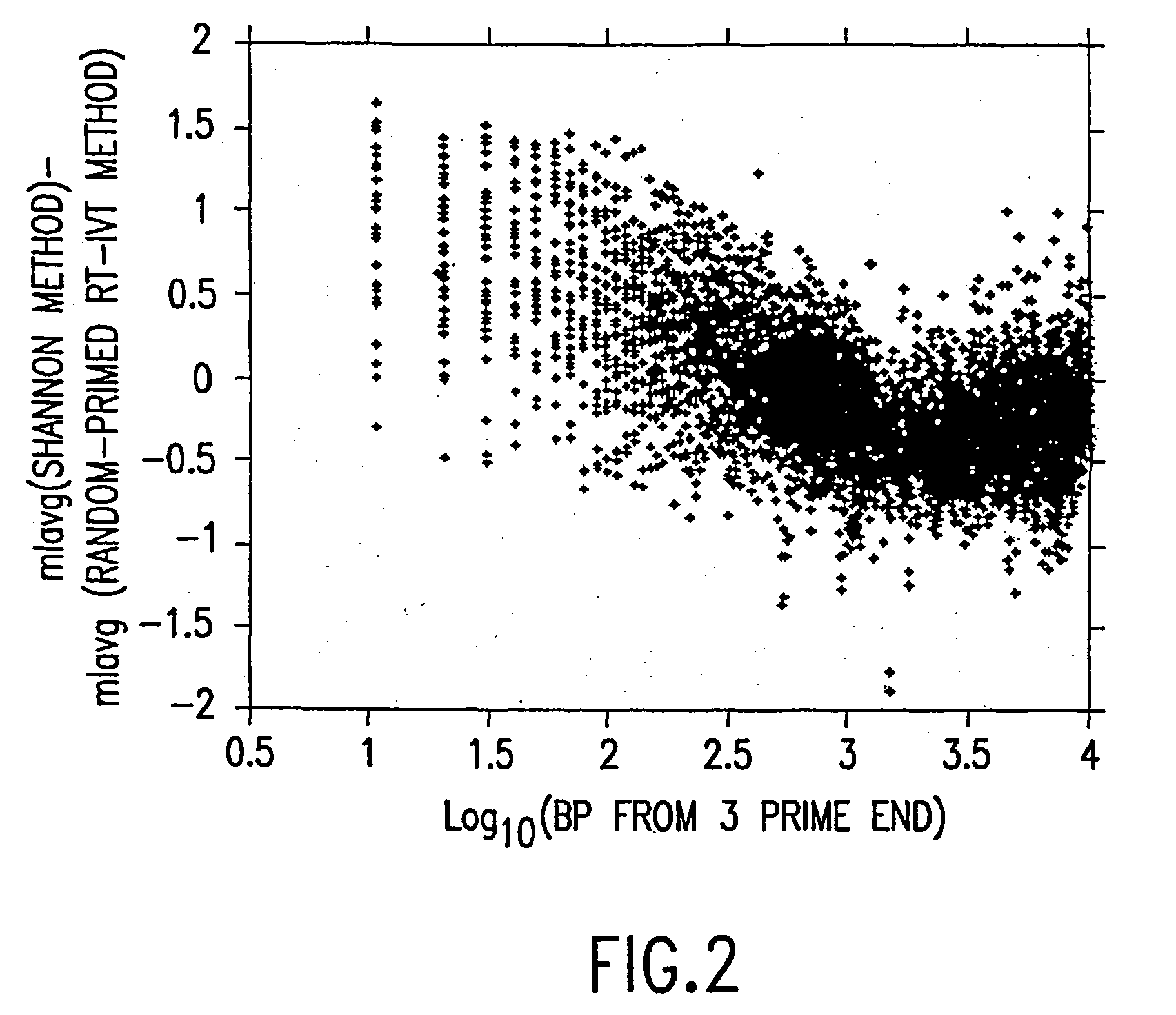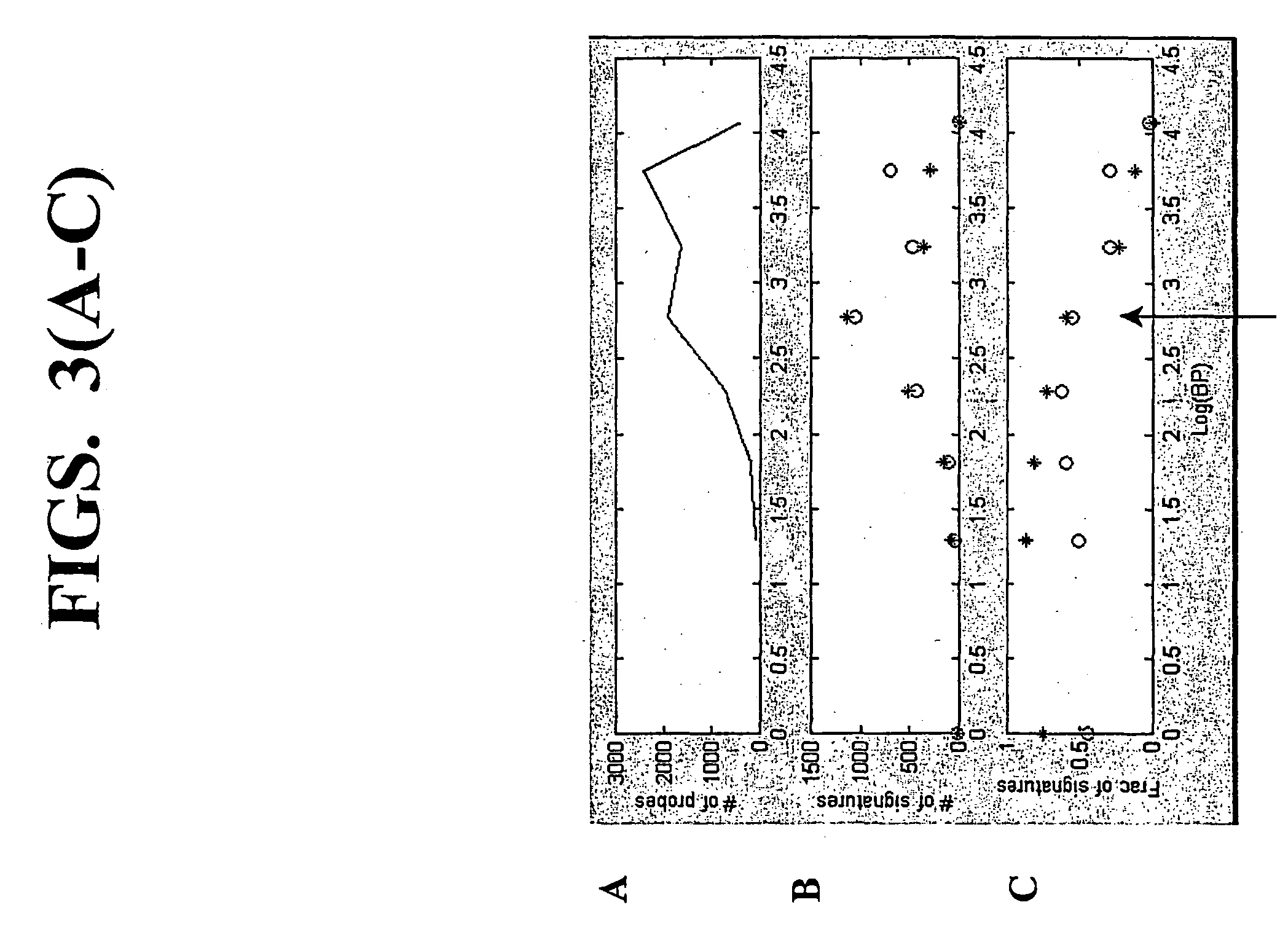Random-primed reverse transcriptase-in vitro transcription method for rna amplification
a reverse transcriptase and in vitro technology, applied in the field of enzymatic amplification of nucleic acids, can solve the problems of inability to apply gene expression monitoring applications, increase the number of copies of the target sequence, and introduce significant changes in the relative amount of specific target species, so as to improve the ability to detect the 5' end sequence of the nucleic acid, the effect of good representation
- Summary
- Abstract
- Description
- Claims
- Application Information
AI Technical Summary
Benefits of technology
Problems solved by technology
Method used
Image
Examples
example 1
6. EXAMPLE 1
cDNA Synthesis and RNA Amplification for the Preparation of CY3- and CY5-Labeled RNA Targets for Gene Expression Monitoring
[0166] This example demonstrates that using the random-primed RT-IVT method of the invention, linear amplification of mRNA to can be used to produce unbiased antisense RNA profiles. The results of an mRNA amplification produced using the random-primed RT-IVT method of the invention were compared with results obtained using the mRNA amplification method disclosed in Shannon (U.S. Pat. No. 6,132,997, entitled "Method for linear mRNA amplification," issued Oct. 17, 2000). Using the random-primed RT-IVT method, poly-A.sup.+ RNA was converted to double-stranded cDNA using degenerate random primers comprising a T7 RNA polymerase promoter sequence (T7-dN.sub.9) to prime first strand cDNA synthesis and degenerate random primers (dN.sub.6) to prime second strand cDNA synthesis to yield a double-stranded cDNA that is recognized by T7 RNA polymerase. The double...
PUM
| Property | Measurement | Unit |
|---|---|---|
| Temperature | aaaaa | aaaaa |
| Molar density | aaaaa | aaaaa |
| Molar density | aaaaa | aaaaa |
Abstract
Description
Claims
Application Information
 Login to View More
Login to View More - R&D
- Intellectual Property
- Life Sciences
- Materials
- Tech Scout
- Unparalleled Data Quality
- Higher Quality Content
- 60% Fewer Hallucinations
Browse by: Latest US Patents, China's latest patents, Technical Efficacy Thesaurus, Application Domain, Technology Topic, Popular Technical Reports.
© 2025 PatSnap. All rights reserved.Legal|Privacy policy|Modern Slavery Act Transparency Statement|Sitemap|About US| Contact US: help@patsnap.com



